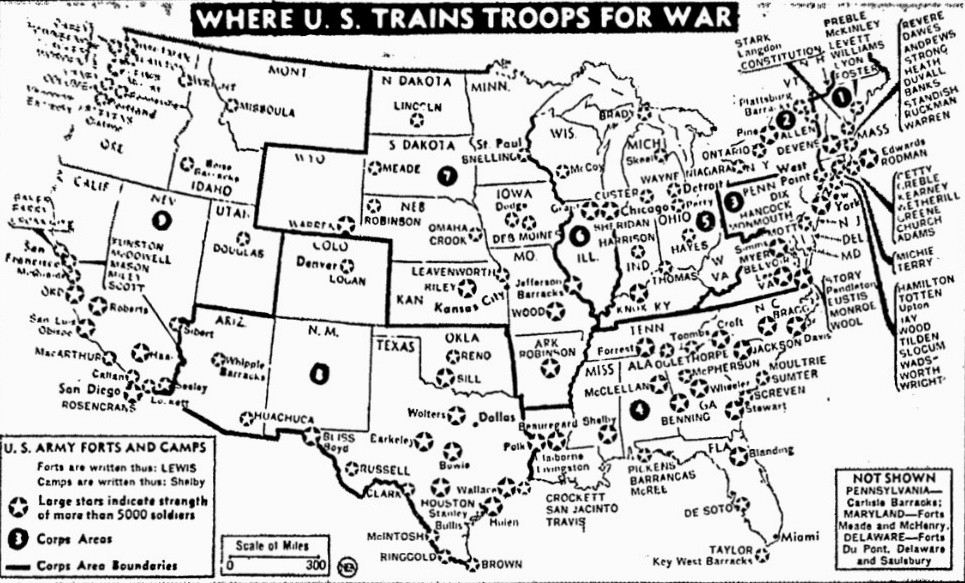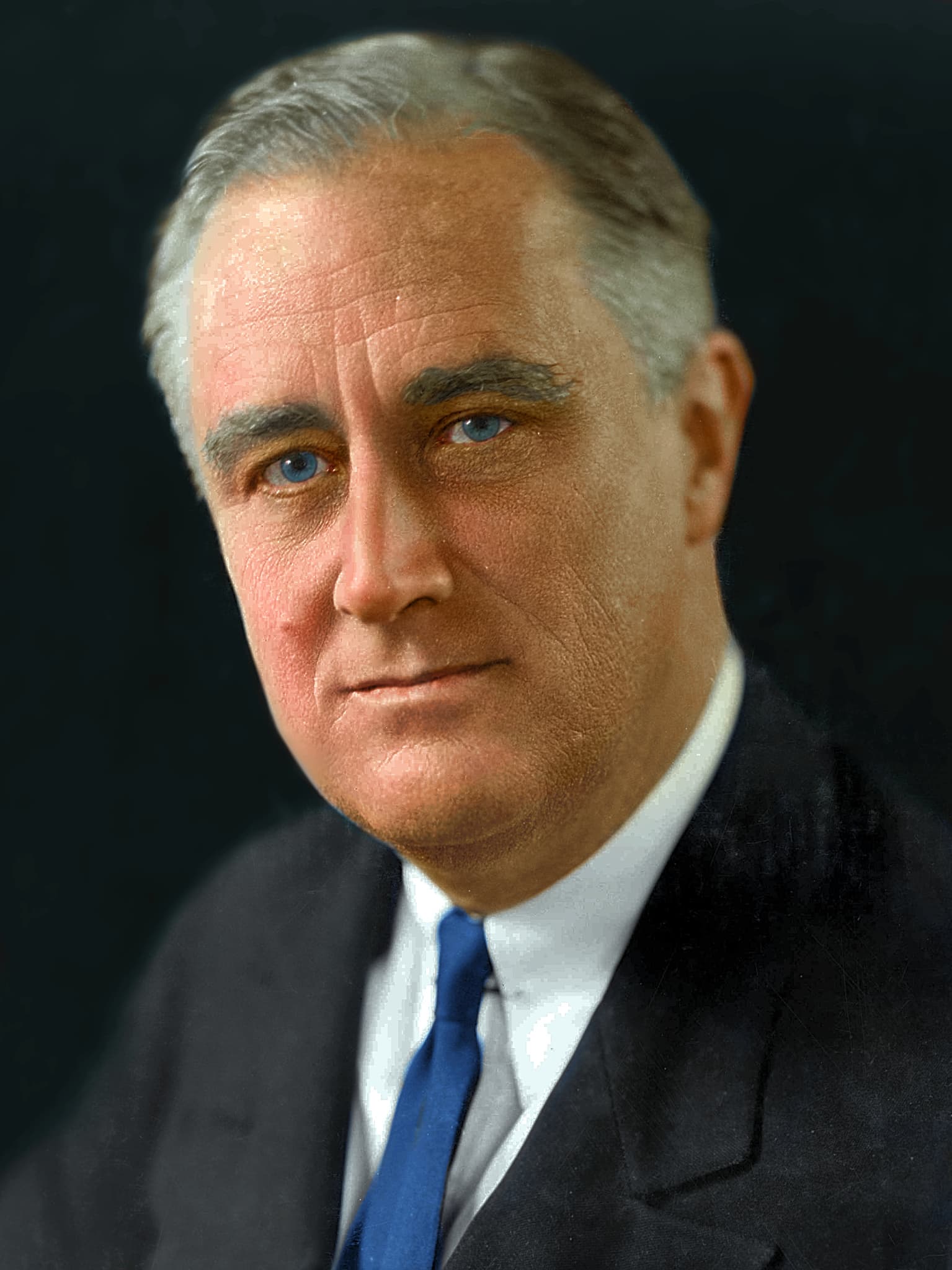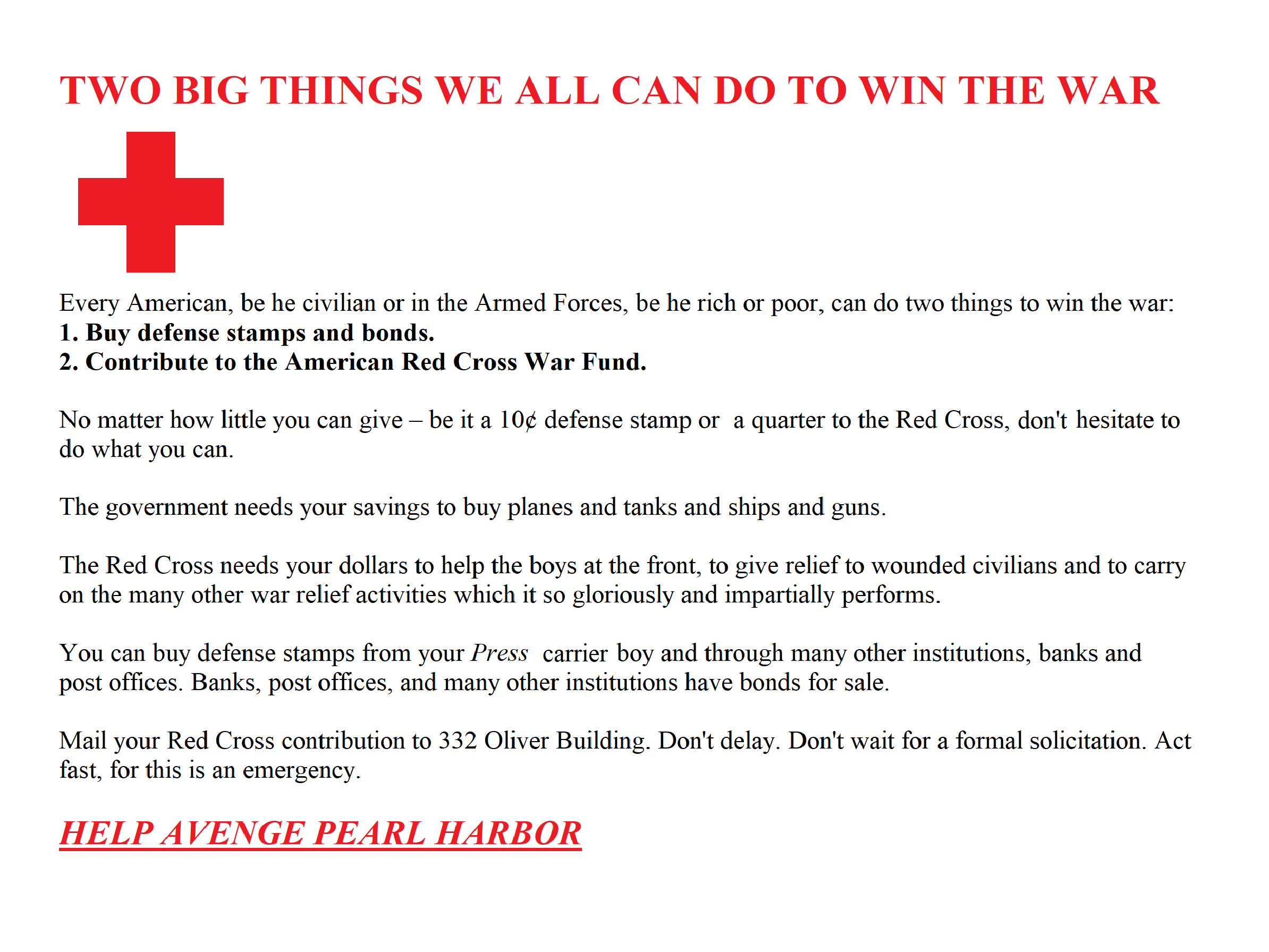Mr. Vice President, Mr. Speaker, members of the Senate and the House of Representatives of the United States:
In fulfilling my duty to report upon the State of the Union, I am proud to say to you that the spirit of the American people was never higher than it is today. The Union was never more closely knit together and this country was never more deeply determined to face the solemn tasks before it.
The response of the American people has been instantaneous, and it will be sustained until our security is assured.
Exactly one year ago today I said to this Congress:
When the dictators are ready to make war upon us, they will not wait for an act of war on our part. They, not we, will choose the time and the place and the method of their attack.
We now know their choice of the time: a peaceful Sunday morning, December 7, 1941.
We know their choice of the place: an outpost – an American outpost – in the Pacific.
We know their choice of the method: the method of Hitler himself.
Japan’s scheme of conquest goes back half a century. It was not merely a policy of seeking living room, it was a plan which included the subjugation of all the peoples in the Far East and in the islands of the Pacific, and the domination of that ocean by Japanese military and naval control of the western coasts of North, Central, and South America.
The development of this ambitious conspiracy was marked by the war against China in 1894, the subsequent occupation of Korea, the war against Russia in 1904, the illegal fortification of the mandated Pacific islands following 1920, the seizure of Manchuria in 1931, and the invasion of China in 1937.
A similar policy of criminal conquest was adopted by Italy. The Fascists first revealed their imperial designs in Libya and Tripoli. In 1935, they seized Abyssinia. Their goal was the domination of all North Africa, Egypt, parts of France and the entire Mediterranean world.
But the dreams of empire of the Japanese and Fascist leaders were modest in comparison with the gargantuan aspirations of Hitler and his Nazis. Even before they came to power in 1933, their plans for that conquest had been drawn. They provided for ultimate domination, not of any one section of the world, but of the whole earth and all the oceans on it.
When Hitler organized his Berlin-Rome-Tokyo alliance, all these plans of conquest became a single plan. Under this, in addition to her own schemes of conquest, Japan’s role was obviously to cut off our supply of weapons of war to Britain and Russia and China, weapons which increasingly were speeding the day of Hitler’s doom. The act of Japan at Pearl Harbor was intended to stun us, to terrify us to such an extent that we would divert our industrial and military strength to the Pacific area, or even to our own continental defense.
The plan has failed in its purpose.
We have not been stunned. We have not been terrified or confused. This very reassembling of the 77th Congress today is proof of that. For the mood of quiet, grim resolution which here prevails bodes ill for those who conspired and collaborated to murder world peace.
And that mood is stronger than any mere desire for revenge. It expresses the will of the American people to make very certain that the world will never so suffer again.
Admittedly, we have been faced with hard choices. It was bitter, for example, not to be able to relieve the heroic and historic defenders of Wake Island. It was bitter for us not to be able to land a million men in a thousand ships in the Philippine Islands.
But this adds only to our determination to see to it that the Stars and Stripes will fly again over Wake and Guam. Yes, see to it that the brave people of the Philippines will be rid of Japanese imperialism, and will live in freedom and security and independence.
Powerful and offensive actions must and will be taken in proper time. The consolidation of the United Nations’ total war effort against our common enemies is being achieved.
That was and is the purpose of conferences which have been held during the past two weeks in Washington and Moscow and Chungking. That is the primary objective of the declaration of solidarity signed in Washington on January 1, 1942, by 26 nations united against the Axis powers.
Difficult choices may have to be made in the months to come. We do not shrink from such decisions. We and those united with us will make those decisions with courage and determination.
Plans have been laid here and in the other capitals for coordinated and cooperative action by all the United Nations – military action and economic action. Already we have established, as you know, unified command of land, sea, and air forces in the southwestern Pacific theater of war. There will be a continuation of conferences and consultations among military staffs, so that the plans and operations of each will fit into the general strategy designed to crush the enemy. We shall not fight isolated wars, each nation going its own way. These 26 nations are united, not in spirit and determination alone, but in the broad conduct of the war in all its phases.
For the first time since the Japanese and the Fascists and the Nazis started along their blood-stained course of conquest, they now face the fact that superior forces are assembling against them. Gone forever are the days when the aggressors could attack and destroy their victims one by one – destroy them without unity of resistance. We of the United Nations will so dispose our forces that we can strike at the common enemy wherever the greatest damage can be done him.
The militarists of Berlin and Tokyo started this war. But the massed, angered forces of common humanity will finish it.
Destruction – destruction of the material and spiritual centers of civilization – this has been and still is the purpose of Hitler and his Italian and Japanese chessmen. They would wreck the power of the British Commonwealth and of Russia and of China and of the Netherlands, and then combine all their forces to achieve their ultimate goal, the conquest of the United States.
They know that victory for us means victory for freedom.
They know that victory for us means victory for the institution of democracy, the ideal of the family, the simple principles of common decency and humanity.
They know that victory for us means victory for religion. And they could not tolerate that. The world is too small to provide adequate living room for both Hitler and God.
In proof of that, the Nazis have now announced their plan for enforcing their new German pagan religion all over the world, a plan by which the Holy Bible and the Cross of Mercy would be displaced by Mein Kampf and the swastika and the naked sword.
Our own objectives are clear – the objective of smashing the militarism imposed by warlords upon their enslaved peoples, the objective of liberating the subjugated nations, the objective of establishing and securing freedom of speech, freedom of religion, freedom from want, and freedom from fear everywhere in the world.
We shall not stop short of these objectives, nor shall we be satisfied merely to gain them and then call it a day. I know that I speak for the American people, and I have good reason to believe that I speak also for all the other peoples who fight with us, when I say that this time we are determined not only to win the war, but also to maintain the security of the peace that will follow.
But we know that modern methods of warfare make it a task, not only of shooting and fighting, but an even more urgent one of working and producing.
Victory requires the actual weapons of war and the means of transporting them to a dozen points of combat.
It will not be sufficient for us and the other United Nations to produce a slightly superior supply of munitions to that of Germany and Japan and Italy, and the stolen industries in the countries which they have overrun.
The superiority of the United Nations in munitions and ships must be overwhelming – so overwhelming that the Axis Nations can never hope to catch up with it. And so, in order to attain this overwhelming superiority, the United States must build planes and tanks and guns and ships to the utmost limit of our national capacity. We have the ability and capacity to produce arms not only for our own forces, but also for the armies, navies, and air forces fighting on our side.
And our overwhelming superiority of armament must be adequate to put weapons of war at the proper time into the hands of those men in the conquered nations who stand ready to seize the first opportunity to revolt against their German and Japanese oppressors, and against the traitors in their own ranks, known by the already-infamous name of Quislings. And I think that it is a fair prophecy to say that, as we get guns to the patriots in those lands, they too will fire shots heard ‘round the world.
This production of ours in the United States must be raised far above present levels, even though it will mean the dislocation of the lives and occupations of millions of our own people. We must raise our sights all along the production line. Let no man say it cannot be done. It must be done and we have undertaken to do it.
I have just sent a letter of directive to the appropriate departments and agencies of our government, ordering that immediate steps be taken:
First, to increase our production rate of airplanes so rapidly that in this year, 1942, we shall produce 60,000 planes, 10,000, by the way, more than the goal that we set a year and a half ago. This includes 45,000 combat planes, bombers, dive bombers, pursuit planes. The rate of increase will be maintained and continued so that next year, 1943, we shall produce 125,000 airplanes, including 100,000 combat planes.
Second, to increase our production rate of tanks so rapidly that in this year, 1942, we shall produce 45,000 tanks, and to continue that increase so that next year, 1943, we shall produce 75,000 tanks.
Third, to increase our production rate of anti-aircraft guns so rapidly that in this year, 1942, we shall produce 20,000 of them, and to continue that increase so that next year, 1943, we shall produce 35,000 anti-aircraft guns.
And fourth, to increase our production rate of merchant ships so rapidly that in this year, 1942, we shall build eight million deadweight tons as compared with a 1941 completed production of 1,100,000. And finally, we shall continue that increase so that next year, 1943, we shall build 10,000,000 tons of shipping.
These figures and similar figures for a multitude of other implements of war will give the Japanese and the Nazis a little idea of just what they accomplished in the attack at Pearl Harbor.
And I rather hope that all these figures which I have given will become common knowledge in Germany and Japan.
Our task is hard, our task is unprecedented, and the time is short. We must strain every existing armament-producing facility to the utmost. We must convert every available plant and tool to war production. That goes all the way from the greatest plants to the smallest, from the huge automobile industry to the village machine shop.
Production for war is based on men and women, the human hands and brains which collectively we call labor. Our workers stand ready to work long hours, to turn out more in a day’s work, to keep the wheels turning and the fires burning 24 hours a day and seven days a week. They realize well that on the speed and efficiency of their work depend the lives of their sons and their brothers on the fighting fronts.
Production for war is based on metals and raw materials: steel, copper, rubber, aluminum, zinc, tin. Greater and greater quantities of them will have to be diverted to war purposes. Civilian use of them will have to be cut further and still further and, in many cases, completely eliminated.
War costs money. So far, we have hardly even begun to pay for it. We have devoted only 15 percent of our national income to national defense. As will appear in my budget message tomorrow, our war program for the coming fiscal year will cost $56 billion or, in other words, more than half of the estimated annual national income. That means taxes and bonds and bonds and taxes. It means cutting luxuries and other non-essentials. In a word, it means an all-out war by individual effort and family effort in a united country.
Only this all-out scale of production will hasten the ultimate all-out victory. Speed will count. Lost ground can always be regained, lost time never. Speed will save lives, speed will save this nation which is in peril, speed will save our freedom and our civilization, and slowness, well, it has never been an American characteristic.
As the United States goes into its full stride, we must always be on guard – on guard against misconceptions which will arise, some of them naturally, or which will be planted among us by our enemies.
We must guard against complacency. We must not underrate the enemy. He is powerful and cunning and cruel and ruthless. He will stop at nothing that gives him a chance to kill and to destroy. He has trained his people to believe that their highest perfection is achieved by waging war. For many years, he has prepared for this very conflict – planning and plotting and training, arming and fighting. We have already tasted defeat. We may suffer further setbacks. We must face the fact of a hard war, a long war, a bloody war, a costly war.
We must, on the other hand, guard against defeatism. That has been one of the chief weapons of Hitler’s propaganda machine, used time and again with deadly results. It will not be used successfully on the American people.
We must guard against divisions among ourselves and among all the other United Nations. We must be particularly vigilant against racial discrimination in any of its ugly forms. Hitler will try again to breed mistrust and suspicion between one individual and another, one group and another, one race and another, one government and another. He will try to use the same technique of falsehood and rumormongering with which he divided France from Britain. He is trying to do this with us even now. But he will find a unity – a unity of will and purpose against him, which will persevere until the destruction of all his black designs upon the freedom and people of the world are ended.
We cannot wage this war in a defensive spirit. As our power and our resources are fully mobilized, we shall carry the attack against the enemy. We shall hit him and hit him again wherever and whenever we can reach him.
We must keep him far from our shores, for we intend to bring this battle to him on his own home grounds.
American Armed Forces must be used at any place in all the world where it seems advisable to engage the forces of the enemy. In some cases, these operations will be defensive in order to protect key positions. In other cases, these operations will be offensive in order to strike at the common enemy with a view to his complete encirclement and eventual total defeat.
American Armed Forces will operate at many points in the Far East.
American Armed Forces will be on all the oceans, helping to guard the essential communications which are vital to the United Nations.
American land and air and sea forces will take stations in the British Isles, which constitute an essential fortress in this great world struggle.
American Armed Forces will help to protect this hemisphere, and also help to protect bases outside this hemisphere which could be used for an attack on the Americas.
If any of our enemies, from Europe or from Asia, attempt long-range raids by suicide squadrons of bombing planes, they will do so only in the hope of terrorizing our people and disrupting our morale. Our people are not afraid of that. We know that we may have to pay a heavy price for freedom. We will pay this price with a will. Whatever the price, it is a thousand times worth it. No matter what our enemies, in their desperation, may attempt to do to us, we will say, as the people of London have said, “We can take it.”
And what’s more we can give it back and we will give it back, with compound interest.
When our enemies challenged our country to stand up and fight, they challenged each and every one of us. And each and every one of us has accepted the challenge, for himself and for his nation.
There were only some 400 United States Marines who in the heroic and historic defense of Wake Island inflicted such great losses on the enemy. Some of those men were killed in action; and others are now prisoners of war. When the survivors of that great fight are liberated and restored to their homes, they will learn that a hundred and thirty million of their fellow citizens have been inspired to render their own full share of service and sacrifice.
We can well say that our men on the fighting fronts have already proved that Americans today are just as rugged and just as tough as any of the heroes whose exploits we celebrate on the Fourth of July.
Many people ask, when will this war end?
There’s only one answer to that. It will end just as soon as we make it end, by our combined efforts, our combined strength, our combined determination to fight through and work through until the end – the end of militarism in Germany and Italy and Japan. Most certainly, we shall not settle for less.
That is the spirit in which discussions have been conducted during the visit of the British Prime Minister to Washington. Mr. Churchill and I understand each other, our motives and our purposes. Together, during the past two weeks, we have faced squarely the major military and economic problems of this greatest world war.
All in our nation have been cheered by Mr. Churchill’s visit. We have been deeply stirred by his great message to us. He is welcome in our midst, now and in days to come. And we unite in wishing him a safe return to his home.
For we are fighting on the same side with the British people, who fought alone for long, terrible months and withstood the enemy with fortitude and tenacity and skill.
We are fighting on the same side with the Russian people who have seen the Nazi hordes swarm up to the very gates of Moscow and who with almost superhuman will and courage have forced the invaders back into retreat.
We are fighting on the same side as the brave people of China – those millions who for four and a half long years have withstood bombs and starvation and have whipped the invaders time and again in spite of the superior Japanese equipment and arms. Yes, we are fighting on the same side as the indomitable Dutch. We are fighting on the same side as all the other governments-in-exile whom Hitler and all his armies and all his Gestapo have not been able to conquer.
But we of the United Nations are not making all this sacrifice of human effort and human lives to return to the kind of world we had after the last world war.
We are fighting today for security, for progress, and for peace – not only for ourselves but for all men, not only for one generation but for all generations. We are fighting to cleanse the world of ancient evils, ancient ills.
Our enemies are guided by brutal cynicism, by unholy contempt for the human race. We are inspired by a faith that goes back through all the years to the first chapter of the Book of Genesis, “God created man in His own image.”
We on our side are striving to be true to that divine heritage. We are fighting, as our fathers have fought, to uphold the doctrine that all men are equal in the sight of God. Those on the other side are striving to destroy this deep belief and to create a world in their own image, a world of tyranny and cruelty and serfdom.
That is the conflict that, day and night, now pervades our lives.
No compromise can end that conflict. There never has been – there never can be – successful compromise between good and evil. Only total victory can reward the champions of tolerance and decency and freedom and faith.



